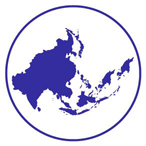Presentation Title
Away and Back Again: "An Unexpected Music Journey" From and To Japan
Location
RCC Small Ballroom
Start Date
11-10-2013 1:45 PM
End Date
11-10-2013 3:15 PM
Abstract
Artists like Edgar Degas collected Japanese prints while Vincent Van Gogh was fascinated by Japanese wood cut prints. Captivated by the style and grace of Japanese culture, Claude Monet painted his wife wearing a kimono in La Japanonaise in 1875. The influence of Japanese art on the French impressionist composers is equally prevalent and can be seen in the example of Claude Debussy inclusion of Hokusai’s “The Great Wave of Kanogawa” for the cover of the musical score of La Mer. In addition, Debussy enthusiastically embraced orientalism and Asian musical material including the pentatonic and whole tone scales in his works for the piano. The Japanese, not to be outdone by the move towards a fusion of eastern and western artistic tendencies, have also been influenced by and provided the inspiration for impressionist music and art. The result is the kind of spectacular use of color and gesture found in piano works by award winning contemporary composers Shin-ichiro Ikebe and Michio Mamiya. Mamiya who is a recipient Grand Prix of the Salzburg Opera and Ikebe, a noted composer of both classical and film music, represent a new generation of Japanese composers captivated by the timbral potential of the piano. In this presentation I will address the unique reimagining of Japanese musical language manifest in impressionist musical style in the works La Terre est Bleue Comme une Orange by Ikebe and Diferencias for Piano by Michio Mamiya. Both works are short and will be performed in their entirety.
Away and Back Again: "An Unexpected Music Journey" From and To Japan
RCC Small Ballroom
Artists like Edgar Degas collected Japanese prints while Vincent Van Gogh was fascinated by Japanese wood cut prints. Captivated by the style and grace of Japanese culture, Claude Monet painted his wife wearing a kimono in La Japanonaise in 1875. The influence of Japanese art on the French impressionist composers is equally prevalent and can be seen in the example of Claude Debussy inclusion of Hokusai’s “The Great Wave of Kanogawa” for the cover of the musical score of La Mer. In addition, Debussy enthusiastically embraced orientalism and Asian musical material including the pentatonic and whole tone scales in his works for the piano. The Japanese, not to be outdone by the move towards a fusion of eastern and western artistic tendencies, have also been influenced by and provided the inspiration for impressionist music and art. The result is the kind of spectacular use of color and gesture found in piano works by award winning contemporary composers Shin-ichiro Ikebe and Michio Mamiya. Mamiya who is a recipient Grand Prix of the Salzburg Opera and Ikebe, a noted composer of both classical and film music, represent a new generation of Japanese composers captivated by the timbral potential of the piano. In this presentation I will address the unique reimagining of Japanese musical language manifest in impressionist musical style in the works La Terre est Bleue Comme une Orange by Ikebe and Diferencias for Piano by Michio Mamiya. Both works are short and will be performed in their entirety.

Comments
Presentation is included in Panel 5: Modernity and the Self: Family Magazines, Fiction, and Western Music in Modern Japan